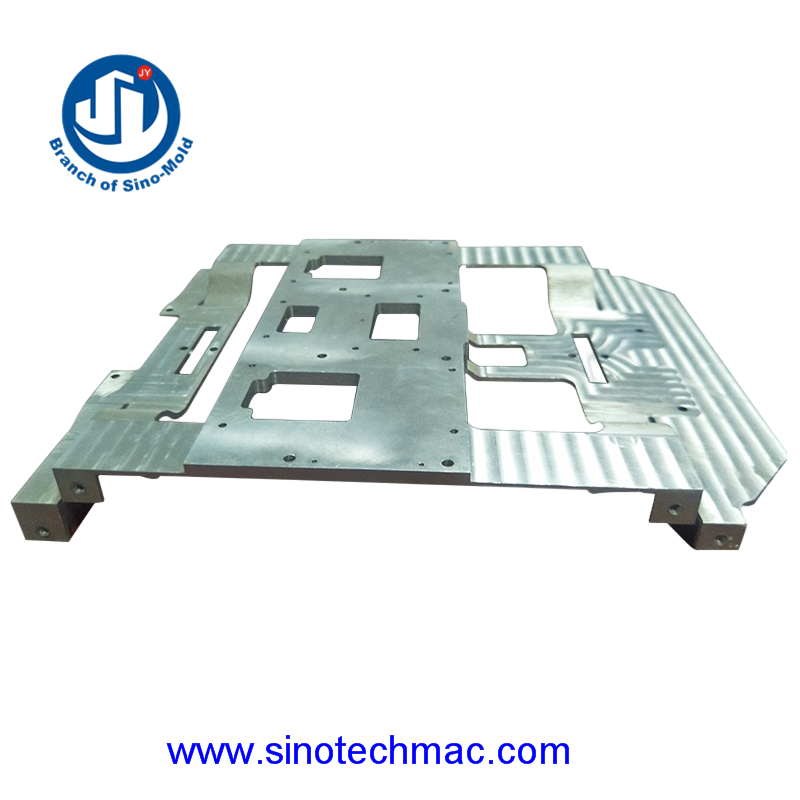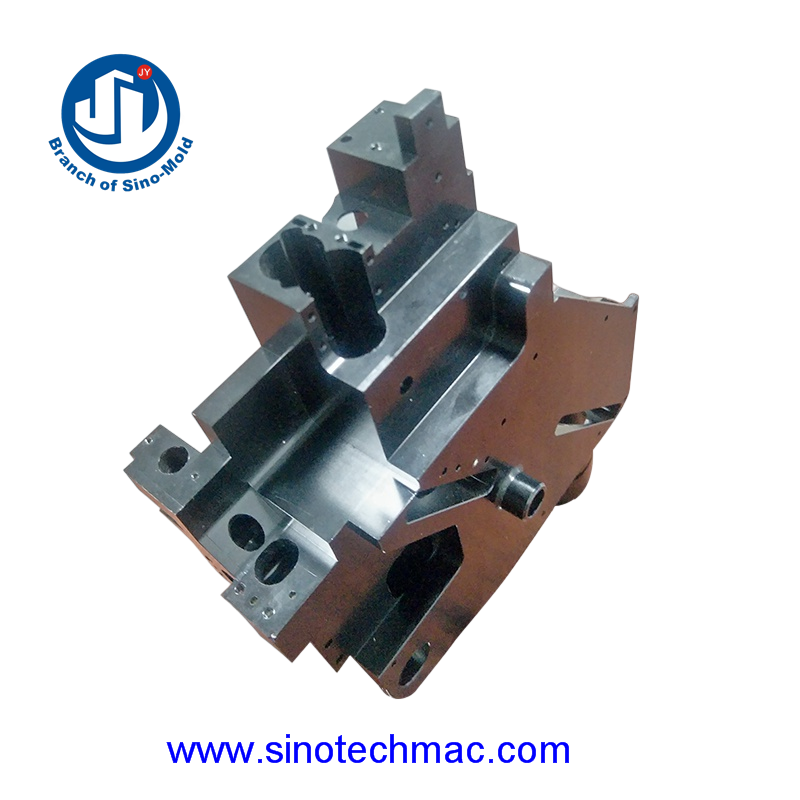Aluminum Alloys are widely used in CNC Machining due to their unique properties and high machinabilities.
In this article, we will explore different types of aluminum in CNC Machining and their differences, and the aluminum machining benefits and limitations.
I-1. What are Aluminum Materials
Aluminum is a chemical element with the symbol “Al” and atomic number 13. In practical applications, it is commonly used as aluminum alloys, mixtures of aluminum with other elements like copper, silicon, magnesium, zinc, and manganese, to enhance specific properties.
In CNC machining, aluminum is widely used due to its favorable manufacturing and machining properties. The combination of its lightweight nature, excellent machinability, and a range of alloy options makes it a popular choice for various industries.

I-2. Common Aluminum Grade

I-3. What are the Properties of Aluminum Alloys?
Aluminum’s properties, including lightweight, high strength-to-weight ratio, high corrosion resistance, good thermal and electrical conductivity, machinability, anodizing capability, recyclability, and electrical conductivity, make it a popular choice for manufacturing in various industries.

I-4. What are the Advantages of CNC Machined Aluminum Parts
1. Easy to machine: Aluminum is easy to machine, exhibiting excellent cutting and drilling capabilities. This ensures efficient and smooth cnc machining processes (CNC milling, turning, drilling, tapping, laser cutting)
2. Speedy Production: Aluminum parts can be produced quickly thanks to their excellent machinability, reducing lead times.
3. Lightweight: Aluminum is a lightweight metal, resulting in CNC-machined components with reduced weight. This is particularly beneficial in applications that require weight reduction, such as aerospace and automotive industries.
4. Good Strength: Although lightweight, aluminum can provide sufficient strength for various applications, especially when combined with appropriate alloying elements.
4. Corrosion Resistance: Aluminum forms a natural oxide layer, granting it inherent corrosion resistance and durability, especially in outdoor and corrosive environments.
5. Excellent Thermal Conductivity: Aluminum is an excellent thermal conductor, making it suitable for applications that require effective heat dissipation, like heat sinks and electronic components.
6. Recyclability: Aluminum is 100% recyclable, maintaining its properties even after recycling, contributing to environmentally friendly and sustainable manufacturing practices.
7. Versatility: With a wide range of available alloy compositions, aluminum can be tailored to meet specific performance requirements for diverse applications.
8. Good Electrical Conductivity: Aluminum possesses good electrical conductivity, making it suitable for electrical components and conductive applications.
I-5. The Most Popular Aluminum Alloy

6061 aluminum is the most popular and cost-effective aluminum alloy for CNC Machining. It is a precipitation-hardened alloy whose main alloying elements are magnesium and silicon. It offers a good balance of strength, machinability, and weldability, making it a popular choice for various aerospace, automotive, electronics, and medical applications.
Because of its excellent machinability, 6061 aluminum can easily be used with various CNC machining technologies, including milling, drilling, turning, and grinding. It has good corrosion resistance and is easy to weld. In addition, it has a good surface finish and can be anodized to enhance its corrosion resistance and appearance.
Other aluminum alloys commonly used in CNC machining include 2024, 5052, and 7075. These alloys also have good machinability and are known for their strength and durability.
I-6.What is the Strongest Aluminum Type?
The strongest aluminum alloy commonly used is 7075 aluminum. It is known for its high strength-to-weight ratio and excellent mechanical properties, making it ideal for applications requiring exceptional strength and durability. 7075 aluminum is often used in aerospace, military equipment, high-stress structural components, and other applications where strength is critical. However, it’s essential to note that while 7075 aluminum is solid, it may not possess the same level of corrosion resistance as other aluminum alloys like 6061. Therefore, selecting the appropriate aluminum alloy depends on the specific needs and environmental conditions.
I-7. Pros and Cons of Different Aluminum Alloys
6061 Aluminum:
Pros:
Excellent machinability, making it easy to work with in CNC machining.
Good strength-to-weight ratio, suitable for structural components and load-bearing applications.
Corrosion resistance for outdoor and marine environments.
Weldable, allowing for complex fabrications.
Versatile and widely available.
Cons:
Relatively lower strength compared to some other aluminum alloys like 7075.
Limited hardness may not be ideal for high-wear applications.
Applications:
Aerospace components
Automotive parts
Electronic enclosures
Bicycle frames
Marine Hardware
7075 Aluminum:
Pros:
High strength and hardness, suitable for heavy-duty and high-stress applications.
Excellent fatigue resistance, making it suitable for aerospace and military applications.
Good machinability in the annealed condition.
Cons:
Challenging to machine in its fully hardened state.
More expensive compared to other aluminum alloys.
Lower corrosion resistance compared to 6061 aluminum.
Applications:
Aerospace components
Military equipment
High-stress structural parts
5052 Aluminum:
Pros:
Good corrosion resistance, making it suitable for marine applications.
Moderate strength and formability.
Weldable and ideal for general-purpose sheet metal fabrication.
Cons:
Lower strength compared to 6061 and 7075 aluminum.
Limited availability in extruded forms.
Applications:
Marine components
Sheet metal fabrication
Fuel tanks
2024 Aluminum
Pros:
High strength-to-weight ratio, suitable for aerospace applications.
Good fatigue resistance.
Suitable for structural applications where weight is a concern.
Cons:
Limited corrosion resistance.
Challenging to weld.
Applications:
Aerospace components
Aircraft structures
High-stress parts
5083 Aluminum:
Pros:
Excellent corrosion resistance, particularly in marine environments.
Good weldability.
High strength and good formability.
Cons:
Lower strength compared to 6061 and 7075 aluminum.
Limited availability in some regions.
Applications:
Marine components
Shipbuilding
Cryogenic storage tanks
Choosing the suitable aluminum alloy based on the specific application requirements is crucial to ensuring optimal performance and durability. Each alloy’s unique properties make them suitable for various industries and applications, ranging from aerospace and automotive to marine and general engineering.
I-8 What are the Limitations of Aluminum Machining

Machining Aluminum parts offer numerous advantages, but it also has certain limitations that should be considered:
1. Low Melting Point: Aluminum has a relatively low melting point compared to other metals, which can be a limitation when machining thin or intricate parts. Care must be taken to avoid overheating and melting the material during machining.
2. Chip Control: Aluminum produces long, stringy chips during machining, which can be challenging to manage. Proper chip evacuation prevents issues like chip buildup and tool clogging.
3. Galling and Built-Up Edge: When machining aluminum, there is a risk of galling and built-up edges on cutting tools. This can decrease tool life and affect machining accuracy if not correctly managed.
4. Workpiece Fixturing: Aluminum’s softness and lower rigidity can present challenges in workpiece fixturing during CNC machining. Adequate support and clamping are essential to prevent vibrations and distortion.
5. Surface Finish: Achieving a high-quality surface finish can be challenging in aluminum CNC machining due to the material’s inherent softness and tendency to generate burrs. Additional finishing processes may be required to achieve the desired surface quality.
6. Tolerances and Dimensional Stability: Aluminum can have slightly more significant dimensional changes due to temperature variations than other materials. This can impact the precision of machined parts, requiring careful consideration during design and machining.
7. Limited High-Temperature Applications: Aluminum’s melting point restricts its use in applications with elevated temperatures, as it may experience significant thermal expansion and deformation.
8. Not Suitable for All Environments: While aluminum has good corrosion resistance, it may not be suitable for extremely harsh environments, such as those with high acidity or alkalinity, where other materials, like stainless steel, may be more appropriate.
Conclusion
Aluminum has become one of the most common raw materials in modern manufacturing. Its unique strength, lightweight, and excellent natural corrosion resistance make it an ideal material for various applications, from high-performance vehicles and aircraft to consumer electronics and medical devices. Manufacturers can use CNC Machines to create precise and complex designs with Aluminum materials.
We expect to see even more innovative uses for CNC aluminum material as technology advances. Whether you’re a designer, engineer, or consumer, CNC aluminum material is worth keeping an eye on as a key material shaping the world.
